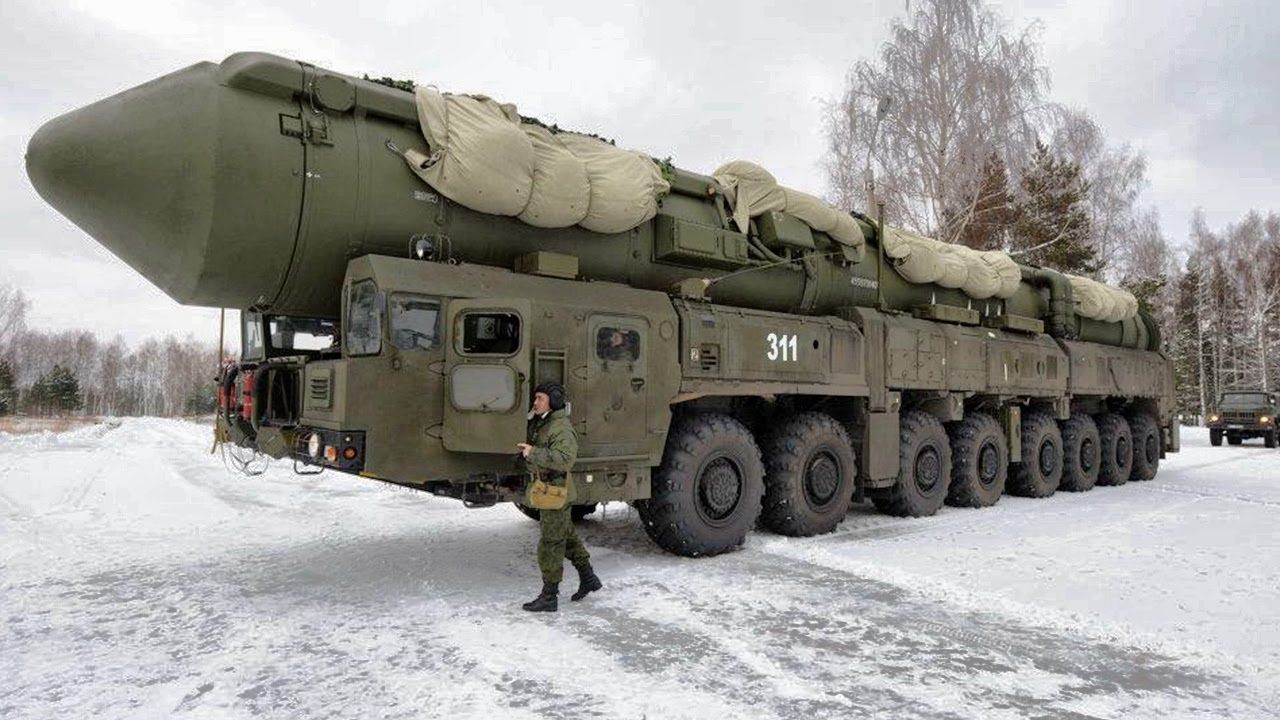The Russian military is holding its second nuclear drill in less than a month amid reports of US B-52 nuke bombers hovering near Russia.
The Russian Ministry of Defense (MoD) announced that the Yars mobile ground-launched missile systems conducted combat patrols in the Russian Mari El Region as part of military training aimed at combating sabotage by a hypothetical enemy, among other maneuvers.
“Servicemen of the Yoshkar-Ola missile unit are carrying out missions including intensive maneuvers on combat patrol routes. Yars missile crews are practicing marches of up to 100 kilometers, spreading out the units, changing their field positions, and their engineering equipment, camouflaging efforts, and protection in combat. Also, strategic missile servicemen are rehearsing ways to counter sabotage and reconnaissance groups,” the MoD was quoted by Russian State News Agency TASS.
The MoD stated that to obtain a more advantageous position among sabotage and reconnaissance groups, anti-sabotage forces would also practice moving on distant approaches to field positions.
AfriPrime App link: FREE to download...
https://www.amazon.com/Africircle-AfriPrime/dp/B0D2M3F2JT
Reports suggested that missile launcher personnel in the Volga river basin, around 700 kilometers (435 miles) east of Moscow, planned to travel more than 100 kilometers (62 miles) to rehearse camouflage and deployment.
As part of these elaborate drills, the missile groups and subunits would rehearse their operations to disperse into wooded regions to enhance their stealth. Support units would remove specialized equipment from potential chemical contamination zones.
The RS-24 Yars missile system is a cornerstone of Russia’s strategic defense capabilities. It features both mobile and silo-based solid-propellant intercontinental ballistic missiles.
The system is mounted atop a truck, making it mobile. According to Russian media reports, it has a missile with multiple warheads that can reach targets up to 11,000 kilometers away.
It can be ready for launch in seven minutes and fire from a prepared location, a customized garage with a sliding roof, or an unprepared position during field deployment. Russia has conducted several drills using strategic and tactical nuclear-capable systems since it launched the invasion of Ukraine in 2022.
The recent Yars drills are the second to be held in July 2024. A similar drill was conducted earlier this month with the Russian MoD pointing out that Yars missile launcher crews were set to move over 100 kilometers and practice camouflage and deployment in at least two different regions.
Russia’s nuclear saber-rattling has been in full swing since the Ukraine invasion began more than two years ago. As part of this intermittent nuclear power projection, the Russian military conducted tactical nuclear drills along with Belarus, close to the Ukrainian border, in May this year. This was followed by the second stage of drills intended to train troops in tactical nuclear weapons in June.

The same month, Russia expanded the scope of its tactical nuclear military drills and announced that its military personnel from the northern Leningrad military area, which borders NATO allies Norway, Finland, Poland, Estonia, Latvia, and Lithuania, participated in tactical nuclear weapons drills.
AfriPrime App link: FREE to download...
https://www.amazon.com/Africircle-AfriPrime/dp/B0D2M3F2JT
Nonetheless, the recent Yars drills occur at a timely moment, coinciding with the presence of US nuclear-capable bombers near Russia.US Nuclear Bombers In Russia’s Backyard
NATO said in a recent statement that two B-52H aircraft of the United States Air Force, belonging to the 2nd Bomb Wing at Barksdale Air Force Base in Louisiana, arrived at Mihail Kogalniceanu Air Base in Romania on July 21 for Bomber Task Force 24-4. This has been projected as a “historic first” for the nuclear bombers.
The statement read, “The US is dedicated to working alongside our NATO Allies along the eastern flank to ensure we have the combined skills and coordination capabilities necessary to maintain regional safety, security, and stability.”
The American long-range strike aircraft flew almost parallel to NATO’s entire eastern border, from the Barents Sea, north of Finland, to the Black Sea. A US Air Force statement said that it was the first time B-52H heavy bombers ever touched down in Romania.
In another first, two B-52 Stratofortresses made their first-ever flight across Finnish airspace before making their first-ever landing in Romania. This was significant given that Finland is one of the two latest entrants into the NATO alliance and shares a long border with Russia.
After crossing Norway, the Barksdale Air Force Base, Louisiana, strategic bombers passed over Lapland, the northernmost part of Finland bordering Russia, Sweden, and Norway.
At about 8 a.m. Central European Time on July 21, two Russian aircraft intercepted an American B-52 flying in international airspace over the Barents Sea. According to Russia’s Defense Ministry, MiG-29 and MiG-31 fighters were dispatched to intercept US aircraft. The Kremlin said the Russian interceptors landed safely while the American bombers made a U-turn away from the “Russian” state boundary.
However, the NATO statement said, “The U.S. aircraft did not change course due to the intercept and continued along their scheduled flight plan without incident, allowing the B-52s to perform their pre-planned mission, which included integration alongside NATO fighter aircraft before landing at Mihail Kogalniceanu Air Base.”
Some local Ukrainian reports claimed the US bombers, after arriving close to Finland, reportedly proceeded towards Russia’s northern Kola Peninsula. This area is home to vital radars, military airfields, and strategic air warfare installations controlled by the Kremlin. However, the EurAsian Times could not independently verify this information.
During the mission, the two bombers were integrated with Finnish F/A-18C Hornets, German Eurofighters, and Romanian F-16s, among other NATO fighters. One KC-46 and two KC-135s from the USAF’s 100th Air Refueling Wing, stationed at RAF Mildenhall in the United Kingdom, provided support for the operation.
The deployment of the B-52 conveys two key messages: it signifies Finland’s closer integration into NATO’s overarching security strategies and the establishment of nuclear deterrence against Moscow in response to the Kremlin’s increasing nuclear posturing.
AfriPrime App link: FREE to download...


